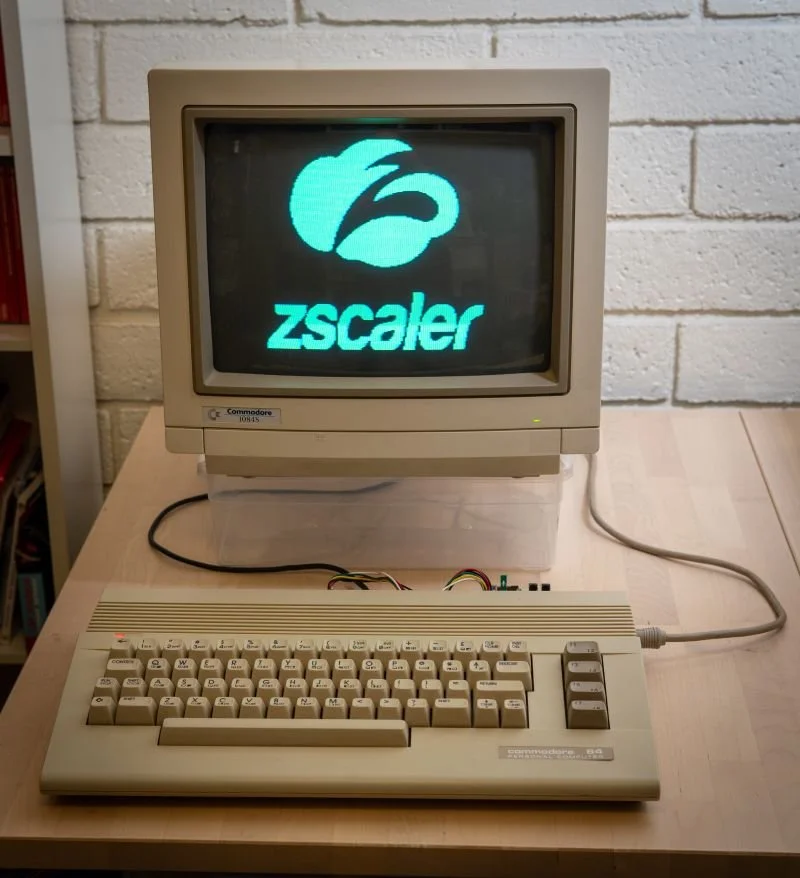Commodore 64c
For today’s “Zscaler Logo on a Weird, Old or Obsolete Device,” we’re going back… back… back… to 1986, when the legendary Commodore 64 ruled the world!
The Commodore 64 is an incredible milestone in personal computing. Originally released in 1982 as the follow-up to the successful Commodore VIC-20, the C64 was a runaway success, ultimately becoming the highest-selling computer of all time with around 17,000,000 units sold. With its advanced graphics and audio capabilities, small size, and affordability (it was introduced at $595 but often sold for less), the C64 was the first computer that was both affordable and available to many people around the world.
This particular machine is a Commodore 64c from 1986, when Commodore redesigned the case to be slimmer and to look more consistent with their top-of-the-line Amiga 500 computer (a previous entry in this series). However, other than its updated aesthetics, this is a standard C64, which means that it’s compatible with a stunning range of accessories, applications, and games.
Because the C64 was such a success, it remains a popular platform for modern developers to build really fun and interesting things. For example, instead of unreliable floppy disks or painfully-slow cassette tapes, my C64 boots from a modern device called an SD2IEC which uses an SD card for storage, making it super easy to download new games and apps from the Internet on my modern computer. I’ve also got a modern gadget called an WME64, which plugs into the modem port on the C64 but connects to my WiFi network - this makes it easy to “dial in” to various bulletin board systems, essentially bringing the Internet onto to this amazing old computer.
To get the Zscaler logo displayed took a few steps:
On my modern PC, I reformatted the logo into a 320x200 pixel bitmap image - the same resolution as the C64 display
I then took the logo bitmap and imported into a Windows app called “ConGo” which can reformat bitmap images into the 16-color palette used by the C64. From that app, I exported the image as a “KoalaPaint” document - a format used by a popular C64 graphics program
I used a Windows command-line app called KoalaLinker to convert the image into a “PRG” - an executable program which will load the image into the C64’s video memory
Finally, I copied the PRG version onto my SD card, popped that into the SD2IEC gadget, booted the Commodore, ran the new Zscaler.PRG app, and PRESTO, the logo popped right up. Fun!
I hope you all have a fantastic weekend, and for those of you in the US who are enjoying a long weekend, I hope you enjoy the extra time to fire up your favorite C64 game or dial into a classic BBS. Happy Friday!
